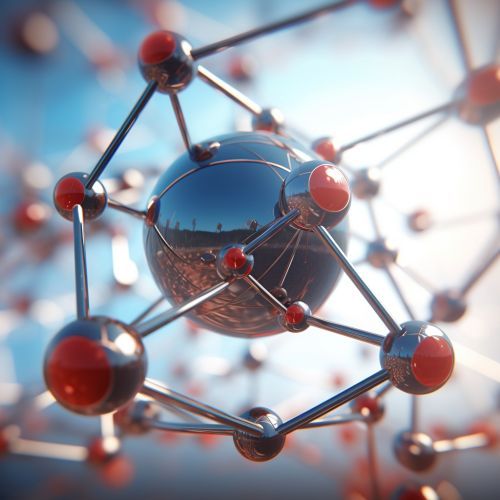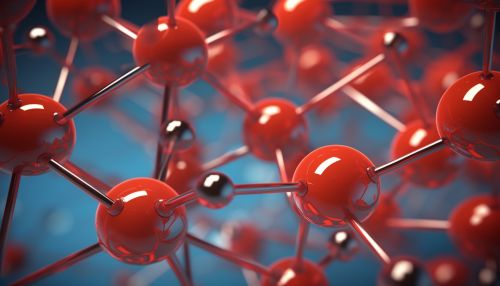Heme
Overview
Heme or haem is a complex organic molecule that contains an iron atom bound in a heterocyclic ring, known as a porphyrin. The iron atom in the center of the ring is capable of binding an oxygen molecule and is responsible for the deep red color of blood. Heme is a critical component of various proteins and enzymes involved in gas transport and metabolism, including hemoglobin, myoglobin, and various cytochromes.
Structure and Properties
The heme molecule is composed of a large organic ring called a porphyrin, composed of four linked pyrrole rings, with an iron atom in the center. The iron atom can exist in either the ferrous (Fe2+) or ferric (Fe3+) state, but only the ferrous state is capable of binding oxygen. The iron atom is coordinated to the four nitrogen atoms of the porphyrin ring and has two additional coordination sites available for binding of ligands such as oxygen, carbon monoxide, or nitric oxide.
Biological Role
Heme is a critical component of several key proteins and enzymes in the body. The most well-known of these is hemoglobin, the protein responsible for oxygen transport in the blood. Hemoglobin contains four heme groups, each of which can bind an oxygen molecule. The binding of oxygen to one heme group increases the oxygen affinity of the remaining heme groups in the hemoglobin molecule, a property known as cooperative binding.
Another important heme-containing protein is myoglobin, which serves as an oxygen store in muscle tissue. Myoglobin contains a single heme group and has a higher affinity for oxygen than hemoglobin, allowing it to store oxygen for use during periods of high metabolic demand.
Heme is also a component of various enzymes involved in drug metabolism, lipid metabolism, and the electron transport chain, a series of protein complexes in the mitochondria that generate ATP, the cell's main source of energy. These include the cytochromes, a family of heme-containing proteins that function as electron carriers in the electron transport chain.


Biosynthesis
Heme biosynthesis is a complex process that involves eight enzymatic steps and occurs in both the mitochondria and the cytoplasm of cells. The process begins in the mitochondria with the condensation of succinyl-CoA and glycine to form delta-aminolevulinic acid (ALA). ALA is then transported to the cytoplasm, where it is converted through several steps to coproporphyrinogen III. This molecule is transported back into the mitochondria, where it is converted to protoporphyrin IX, the immediate precursor to heme. The final step in heme biosynthesis is the insertion of an iron atom into the protoporphyrin IX ring, a reaction catalyzed by the enzyme ferrochelatase.
Disorders of Heme Metabolism
Disorders of heme metabolism, known as porphyrias, are a group of rare genetic diseases characterized by defects in the enzymes involved in heme biosynthesis. These disorders can result in the accumulation of porphyrins or porphyrin precursors in the body, leading to a variety of symptoms including skin sensitivity to sunlight, abdominal pain, and neurological problems.
